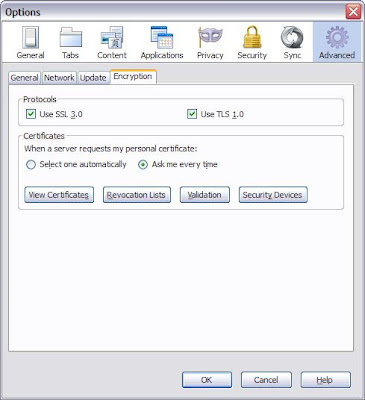When attempting to connect to the Oracle Enterprise Manager using Firefox 15.0.1 or later, the following message is displayed:
Cannot communicate securely with peer: no common encryption algorithm(s). (Error code: ssl_error_no_cypher_overlap)
Solution
To allow secure connection to the Oracle Enterprise Manager with Firefox 15.0.1 and later, you must ensure that TLS has been enabled.
To do this, complete the following steps:
In Firefox, click Tools > Options.
In the Options notebook, click the Advanced tab.
Click the Encryption tab.
In the Protocols section, click Use TLS 1.0.
Click OK.
Attempt to re-connect to the Oracle Enterprise Manager page. An Untrusted Connection message is displayed.
Click Add Exception. The Add Security Exception window is displayed.
Click Confirm Security Exception. The Oracle Enterprise Manager page is displayed
Cannot communicate securely with peer: no common encryption algorithm(s). (Error code: ssl_error_no_cypher_overlap)
Solution
To allow secure connection to the Oracle Enterprise Manager with Firefox 15.0.1 and later, you must ensure that TLS has been enabled.
To do this, complete the following steps:
In Firefox, click Tools > Options.
In the Options notebook, click the Advanced tab.
Click the Encryption tab.
In the Protocols section, click Use TLS 1.0.
Click OK.
Attempt to re-connect to the Oracle Enterprise Manager page. An Untrusted Connection message is displayed.
Click Add Exception. The Add Security Exception window is displayed.
Click Confirm Security Exception. The Oracle Enterprise Manager page is displayed




